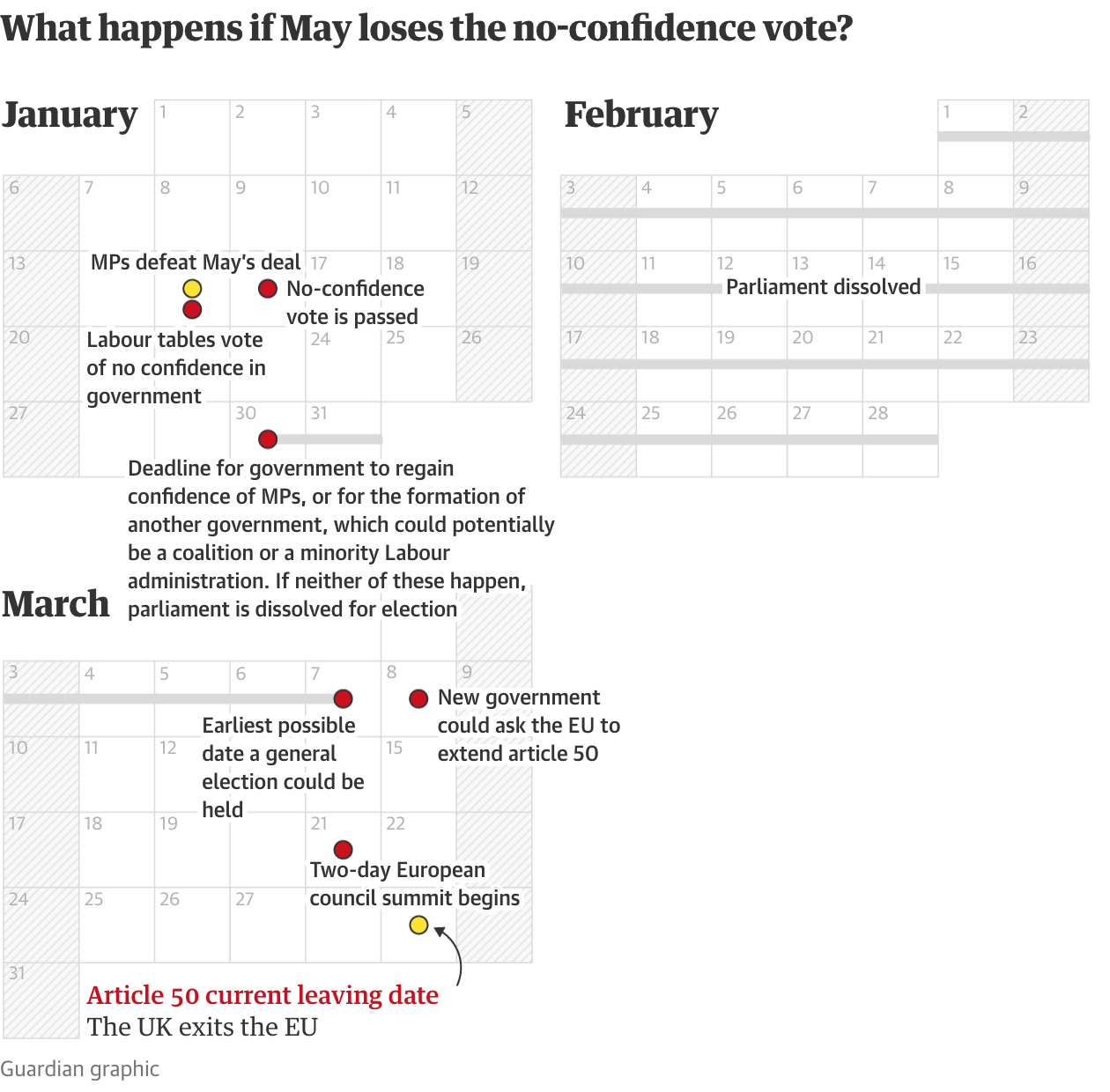A no confidence vote on Theresa May’s government, that’s what.
For those not familiar with parliamentary democracies, basically a no confidence vote is held when a substantial number of members of parliament have just that, no confidence, in the government of the day. The legislative body then votes and if the government wins, the government stays in power. If the government loses, typically, though not always, a new election is held to create a distribution of seats—it’s thought—that will yield a government that can hold the confidence. (There really is not an analogy for this in the US government that I can think of.)
To be fair, nobody really expects May’s government to collapse this afternoon. The Tories and her Democratic Unionist Party (a small Northern Irish party supporting the government) do not want to hold new elections nor do they want to give the Leader of the Opposition, Jeremy Corbyn, the chance to form his own government as much as they might despise May and her Brexit deal. So in all likelihood May survives by a dozen or so votes. On the other hand, the result yesterday was surprising in its scale, so could twenty or so of the 118 Tories who voted no vote against May? Possibly.
So then what next? Thankfully the Guardian put together two calendars showing just what happens and, crucially, in the context of how much time remains until the UK crashes out of the EU.
In case she wins, as we expect.

If she loses, which is possible, but unlikely.

The key thing to note is that the election campaign would eat up most of the time left and leave the UK very little time to do anything but ask the EU for an extension.
These are two small, but really nicely done graphics.
Credit for the piece goes to the Guardian’s graphics department.
